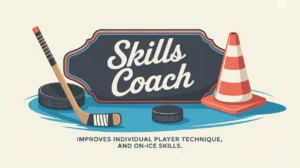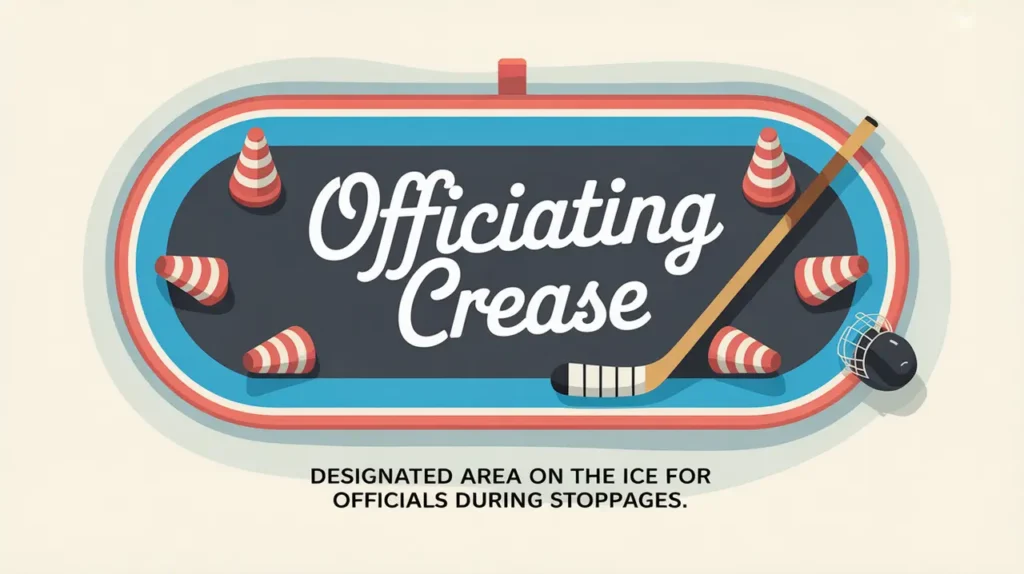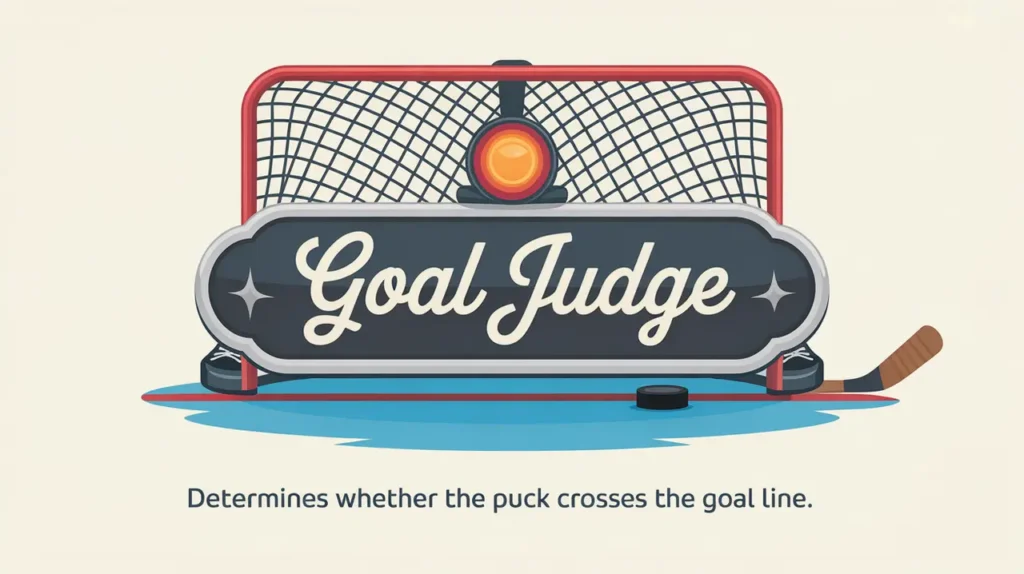Jim’s Intro to the Timekeeper
Hi folks, Jim here, the only commentator who once stopped the game clock during a charity match because I thought the buzzer button was for ordering fast food.
What is a timekeeper?
A timekeeper is the off-ice official responsible for managing the game clock, penalty times, and official score display. They work from the penalty box or scorer’s table, ensuring that timekeeping is accurate for periods, stoppages, penalties, goals, and intermissions.
While players and refs get most of the spotlight, the timekeeper’s precision controls the rhythm and structure of the entire game. One mistimed second can change momentum, or even decide the outcome.
How does it work?
Timekeepers influence the game through accuracy, focus, and coordination:
Game Clock Operation
- Timekeepers start and stop the clock in sync with the referee’s whistle, ensuring periods are timed correctly.
- They must react instantly to stoppages and faceoff signals, avoiding lag or early stops that disrupt play.
Penalty Timing
- They track penalty durations, ensuring the correct player returns to the ice at the right moment.
- This includes stacking multiple penalties, tracking overlapping minors, and managing early releases on power-play goals.
Goal and Assist Recording
- Timekeepers note the official time of goals and assists for recordkeeping, often working with the scorekeeper or officials to confirm details.
Communication with Officials
- They relay timing issues, penalty details, or clock corrections to referees and linesmen during stoppages.
- Quick, clear communication keeps the game running smoothly.
Managing Intermissions and Breaks
- Timekeepers control intermission lengths, TV timeouts, and period breaks, ensuring everything runs on schedule, especially in tournaments or televised games.
Common Situations Involving Timekeepers
- Precise Period Start/Stops: Coordinating with on-ice whistles to keep accurate time.
- Penalty Expirations: Releasing players exactly when their penalty ends, not a second too early or late.
- Goal Timing: Recording goals down to the second for official records.
- Clock Malfunctions: Notifying officials immediately if the game clock fails or runs incorrectly.
- Multiple Penalties: Managing overlapping penalties and ensuring correct manpower on the ice.
How do you make good decisions with it?
Great timekeepers rely on focus, anticipation, and calm execution.
- Watch the Referee Closely: Your cues come from them, not the crowd or players.
- React Fast, Not Frantic: Precision matters more than panic speed.
- Double-Check Penalty Times: Overlaps and early releases are common mistakes; avoid them through clear tracking.
- Communicate Clearly: If something goes wrong, alert officials immediately.
- Stay Neutral and Unflappable: Fans may yell, benches may question, but your job is accuracy, not debate.
How do you master it?
Mastering the timekeeper role takes attention to detail, quick reflexes, and rule knowledge. Timekeepers train to track multiple moving elements simultaneously, including the clock, penalties, goals, and intermissions. Familiarity with the timekeeping system and a deep understanding of penalty rules are essential. Many experienced timekeepers develop a rhythm that matches the flow of the game itself.
What does it look like when done right?
A great timekeeper starts and stops the clock seamlessly, releases penalized players exactly on time, and records goals with flawless accuracy. When the game gets hectic (multiple penalties, quick goals, intense finishes) they keep everything synchronized without missing a beat. Nobody notices them, and that’s the highest compliment.
Commentator’s Corner
Jim’s Take
Timekeepers are like great drummers in a band. You don’t hear them when everything’s perfect, but if they miss a beat, everyone notices.
Parent Tip
If your player or teen wants to help out at games, timekeeping is a great way to learn rules, stay close to the action, and develop focus under pressure.
Player Tip
Respect the timekeeper’s role. Knowing how they work can actually give you a competitive edge, especially with staggered penalties and late-game clocks.
A Final Thought
Timekeepers are the quiet metronomes of hockey, keeping the game on pace and fair. When mastered, the role blends focus, accuracy, and rule knowledge, turning precise seconds into the invisible structure that makes hockey work.









